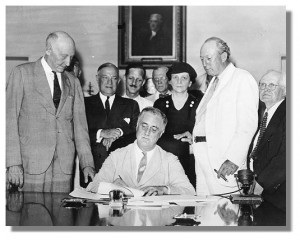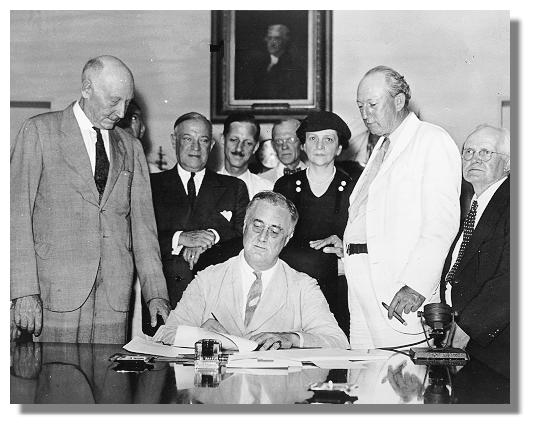
(from Wikimedia Commons)
I’ve come to view Paul Krugman as belligerent and repetitive, but he’s still a smart writer who can turn a phrase. Last year Krugman noted that the federal government is essentially “an insurance company with an army.” Defense spending, Social Security, Medicare, and Medicaid represent about 61% of the federal budget. Krugman writes that any attempt to cut government spending must address these programs. This is why Republicans are right push Democrats and demand that entitlement spending should be scrutinized during the budget process. The same goes for defense spending, although Republicans are less inclined to question that part of the budget.
Taking Krugman’s argument one step further, it becomes clear that one of the main jobs of the federal government is to transfer money from the young to the old. Just looking at Social Security and Medicare, those two programs account for 34% of the federal budget, and they benefit people 65 years and older, which is 13.3% of the population.
There are good reasons that the federal government provides all of these services. National defense is a textbook example of a public good, which means it benefits everyone regardless of if they pay for it, and it’s very hard for the market to provide efficiently. Insurers aren’t very keen on providing health insurance to risky seniors. And Social Security was originally created because most labor was manual, and people couldn’t work those jobs as they got older.
There’s also a good reason that programs for seniors are taking up an increasing share of the federal budget: there’s more people, and they’re living longer. In 1900, there were 76 million people in the U.S. and only 4.1% of them were over 65. Now there are 311 million people and 13.3% of them are elderly.
For all the political rhetoric about investing in America and winning the future, that’s not really what the federal government does. Infrastructure is 3% of the federal budget. Education accounts for 2% of federal spending, as does science and medical research. Student loans make up 1% of the federal budget. Meanwhile, the unemployment rate for people 20 to 24 is 13.2%, compared to the overall rate of 7.9%.
It’s a bit unfair to only look at federal spending when examining budget priorities. After all, most state and local budgets are dominated by education, so it’s not as if we’re not spending money on students. But it’s also unfair to set aside Social Security and Medicare as unquestioned and untouchable parts of the budget. These programs have become “third rails” for politicians because of the powerful senior lobby. Political scientist Andrea Campbell writes in her book How Policies Make Citizens that prior to Social Security, seniors did not exist as an interest group. The creation of this expansive program, which many seniors came to rely on for a substantial part of their income, politicized that part of the population. The AARP, formed in 1958, now has over 40 million members.
Many Americans have this fantasy about the government being run like a business. In that case, what is the return on investment for Social Security and Medicare? Are those programs the best use of our tax dollars? Liberals have a kneejerk reaction against cutting government programs, but these are important questions. It’s true that these programs do a lot of good for a group that needs assistance – but this is true of a lot of government spending. And any money spent on one program is money not being spent somewhere else. Some conservatives, like David Brooks, have argued that we should combat rise inequality by investing in more heavily in children.
Participation by young voters has increased in the last few elections, but the senior lobby is powerful and has a fifty year head start. Social Security and Medicare and very popular and aren’t in danger anytime soon. But if children are the future, shouldn’t we focus more effort and tax dollars on them?
